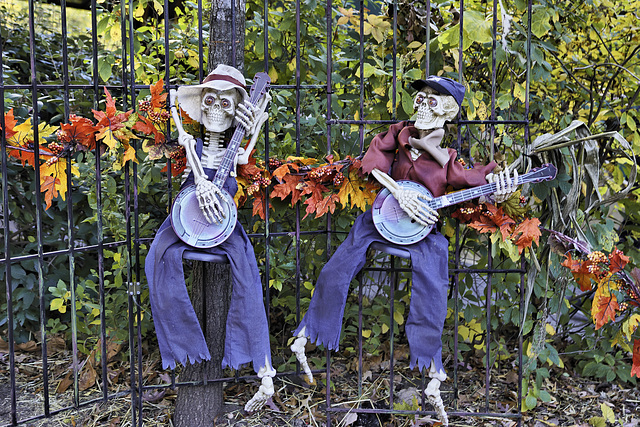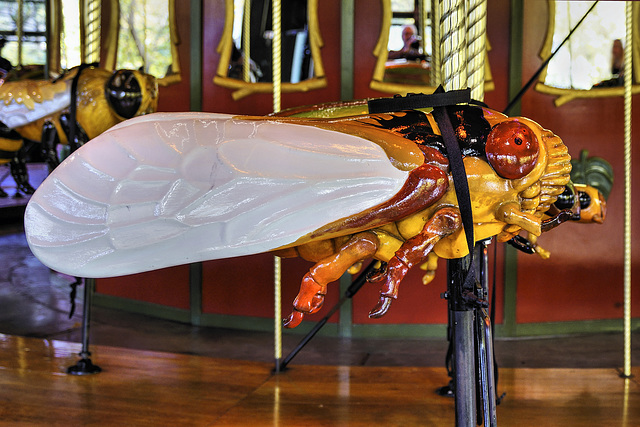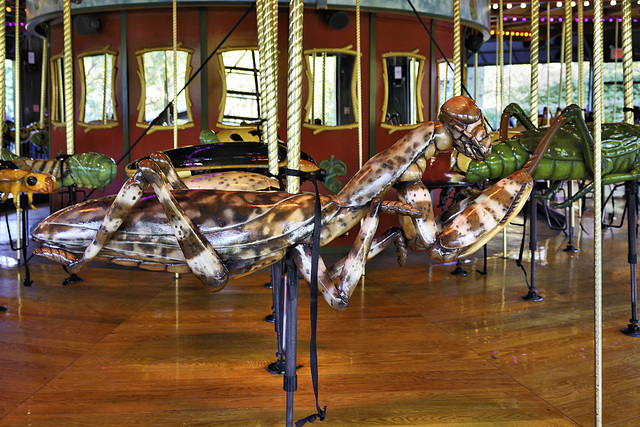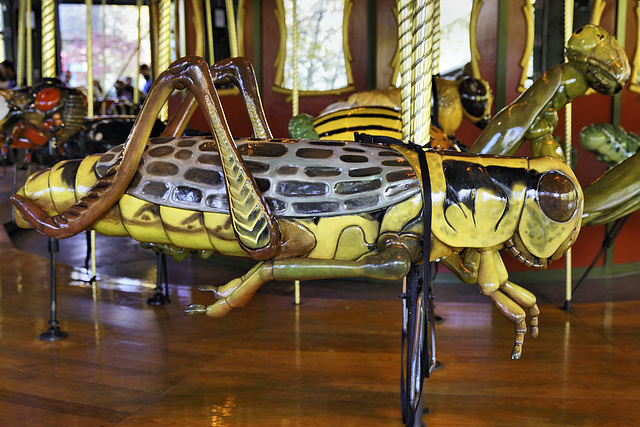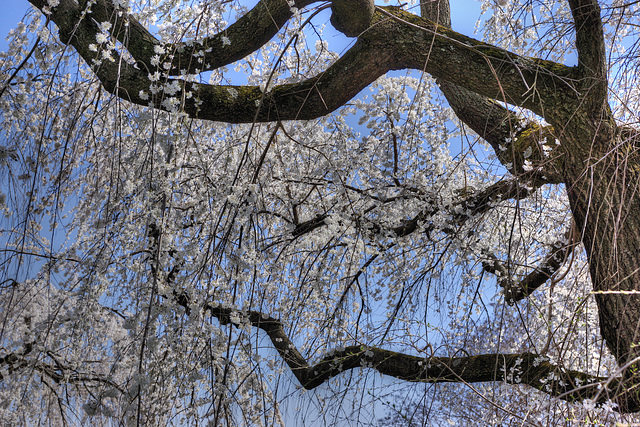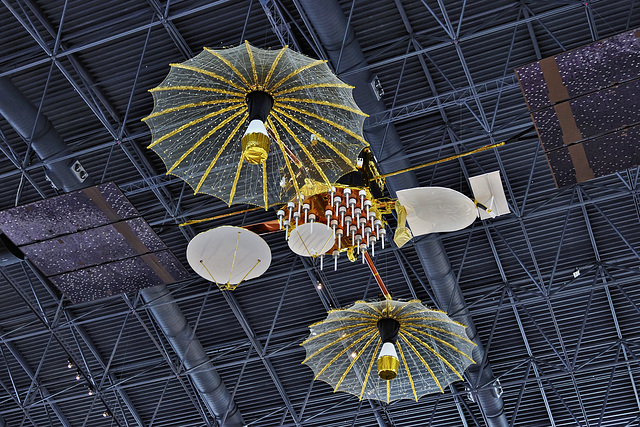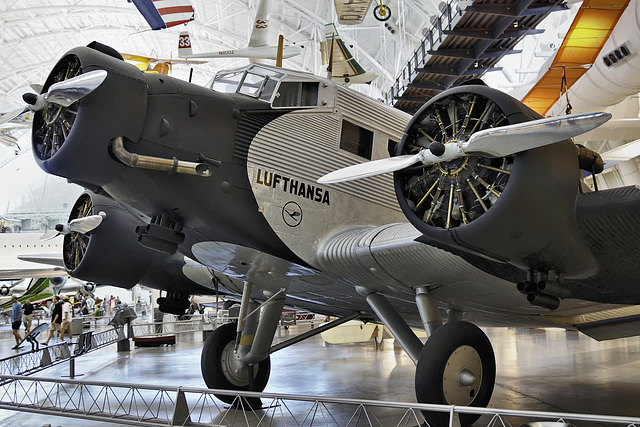
2016-7
Playing the Bones – Bronx Zoo, New York City, New York
Honey Bee – Bug Carousel, Bronx Zoo, New York City, New York
In lieu of horses and other mammalian and mythological beasts, the Bronx Zoo Bug Carousel features 64 different types of insects that you can mount – including beetles, grasshoppers, ladybugs, a long-legged praying mantis, a formidable bombardier beetle, and an endearing firefly. There are also two stationary chariots: a monarch butterfly and a dung beetle. Each figure is hand-carved from sustainable basswood and painted to look just like its real-life critter counterpart.
Billing itself as the first and only carousel with a lineup entirely of insects, the Bug Carousel has been a staple of children’s visits to the zoo since its opening in 2005. The ride’s meant to be both fun and educational, and you can admire painted murals running along the circumference of the center pole, capturing caterpillars’ transformation into butterflies. To complete the experience, the carousel’s music was even composed with real insect sounds from the Wildlife Conservation Society.
You can see the lot of them by following this link: carousels.org/psp/BronxZoo
Cicada – Bug Carousel, Bronx Zoo, New York City, New York
In lieu of horses and other mammalian and mythological beasts, the Bronx Zoo Bug Carousel features 64 different types of insects that you can mount – including beetles, grasshoppers, ladybugs, a long-legged praying mantis, a formidable bombardier beetle, and an endearing firefly. There are also two stationary chariots: a monarch butterfly and a dung beetle. Each figure is hand-carved from sustainable basswood and painted to look just like its real-life critter counterpart.
Billing itself as the first and only carousel with a lineup entirely of insects, the Bug Carousel has been a staple of children’s visits to the zoo since its opening in 2005. The ride’s meant to be both fun and educational, and you can admire painted murals running along the circumference of the center pole, capturing caterpillars’ transformation into butterflies. To complete the experience, the carousel’s music was even composed with real insect sounds from the Wildlife Conservation Society.
You can see the lot of them by following this link: carousels.org/psp/BronxZoo
Praying Mantis – Bug Carousel, Bronx Zoo, New York City, New York
In lieu of horses and other mammalian and mythological beasts, the Bronx Zoo Bug Carousel features 64 different types of insects that you can mount – including beetles, grasshoppers, ladybugs, a long-legged praying mantis, a formidable bombardier beetle, and an endearing firefly. There are also two stationary chariots: a monarch butterfly and a dung beetle. Each figure is hand-carved from sustainable basswood and painted to look just like its real-life critter counterpart.
Billing itself as the first and only carousel with a lineup entirely of insects, the Bug Carousel has been a staple of children’s visits to the zoo since its opening in 2005. The ride’s meant to be both fun and educational, and you can admire painted murals running along the circumference of the center pole, capturing caterpillars’ transformation into butterflies. To complete the experience, the carousel’s music was even composed with real insect sounds from the Wildlife Conservation Society.
You can see the lot of them by following this link: carousels.org/psp/BronxZoo
Grasshopper – Bug Carousel, Bronx Zoo, New York City, New York
In lieu of horses and other mammalian and mythological beasts, the Bronx Zoo Bug Carousel features 64 different types of insects that you can mount – including beetles, grasshoppers, ladybugs, a long-legged praying mantis, a formidable bombardier beetle, and an endearing firefly. There are also two stationary chariots: a monarch butterfly and a dung beetle. Each figure is hand-carved from sustainable basswood and painted to look just like its real-life critter counterpart.
Billing itself as the first and only carousel with a lineup entirely of insects, the Bug Carousel has been a staple of children’s visits to the zoo since its opening in 2005. The ride’s meant to be both fun and educational, and you can admire painted murals running along the circumference of the center pole, capturing caterpillars’ transformation into butterflies. To complete the experience, the carousel’s music was even composed with real insect sounds from the Wildlife Conservation Society.
You can see the lot of them by following this link: carousels.org/psp/BronxZoo
Weeping Cherry Blossoms – United States National Arboretum, Washington, DC
Since the 8th century of the common era, the Japanese have held flower viewing gatherings, or hanami, under mature trees such as these. In the past, they wrote poems and offered sake to the spirits – kami – that lived in the trees to assure abundant harvests. Today, while many people in Japan and elsewhere look forward to picnics and parties under the cherry trees, just pausing to admire the blossoms is "doing hanami." These two trees are weeping forms of the Higan cherry.
Tracking and Data Relay Satellite – Smithsonian National Air and Space Museum, Steven F. Udvar-Hazy Center, Chantilly, Virginia
During the first decades of the Space Age, NASA required a worldwide network of ground stations to communicate with satellites and human-operated spacecraft. The Tracking and Data Relay Satellite (TDRS) system, a constellation of three spacecraft placed into geosynchronous orbit beginning in 1983, was designed to replace this expensive, far-flung system. Positioned equidistant in orbit, they provide nearly continuous contact with spacecraft in low Earth orbit-an especially crucial capability for ensuring the safety of Space Shuttle crews. A TDRS transmits both voice and data communications. Under optimum conditions, it can transfer in a second the equivalent of a 20-volume encyclopedia. This artifact is a high-fidelity model built by Design Models, Inc., under the direction of TRW, which manufactured the first several TDRS spacecraft. TRW donated the model in 1986.
Benoist-Korn Type XII – Smithsonian National Air and Space Museum, Steven F. Udvar-Hazy Center, Chantilly, Virginia
The brown aircraft in the centre of this photo is a Benoist-Korn Type XII biplane. In the spring of 1912 Thomas Wesley Benoist announced the completion of his firm's newest aircraft, the Type XII. It was a two-place tractor biplane, powered by a Roberts six-cylinder, 75-horsepower engine. It was one of the first closed-fuselage tractor airplanes to appear in the United States. Perhaps five Type XII aircraft were produced by the Benoist factory during the next year. The NASM Benoist Type XII was constructed in the Benoist shop in St. Louis by its purchasers, Edward and Milton Korn. The Korn brothers began work on their airplane in March 1912. It was completed on May 20, and it was flown soon thereafter at Anna, Illinois. During the following year, the Korns performed numerous exhibitions with their Benoist. Most American aircraft produced during this period were close copies of Wright, Curtiss, or European machines. Benoist was one of the very few U.S. firms building and selling original designs in the pioneer era.
The Benoist-Korn is framed by the wings of a Nieuport 28C.1. Appearing in mid 1917, the Nieuport 28C.1 was rejected by the French in favour of the sturdier, more advanced Spad XIII. Having no suitable fighter design of its own, the United States adopted the Nieuport 28 as a stop-gap measure before the much-in-demand Spad XIIIs could be made available from the French. It was the first fighter aircraft to serve with an American fighter unit under American command and in support of U.S. troops. It was also first type to score an aerial victory with an American unit. The Nieuport 28 also made its mark in U.S. aviation history after the war. Twelve were employed by the U.S. Navy for shipboard launching trials from 1919 to 1921. Others were operated by the U.S. Army in the 1920s. In private hands, several were modified for air racing, and a number found their way into Hollywood movies. Still others became privately-owned airplanes flying in various sporting and commercial capacities.
"Tante Ju" – Smithsonian National Air and Space Museum, Steven F. Udvar-Hazy Center, Chantilly, Virginia
Affectionately known in Germany as Tante Ju, or "Auntie Ju," the Junkers Ju 52/3m was one of the most successful European airliners ever made. Designed for Deutsche Luft Hansa in 1932, the Ju 52/3m was a tri-motor version of the single-engine Ju-52. It could carry 17 passengers or 3 tons of freight and had excellent short-field performance. By the mid-1930s, airlines throughout Europe and Latin America were flying them. In World War II, they were the Luftwaffe’s primary transports, and some served as bombers.
A total of 4,835 Ju 52/3ms were built, including 170 under license by Construcciones Aeronauticas (CASA) in Spain and more than 400 by Ateliers Aeronautiques de Colombes in France. This airplane is a Spanish-built CASA 352-L. Lufthansa German Airlines acquired it for promotional flights, then donated it to the Smithsonian in 1987.
Jump to top
RSS feed- Latest items - Subscribe to the latest items added to this album
- ipernity © 2007-2024
- Help & Contact
|
Club news
|
About ipernity
|
History |
ipernity Club & Prices |
Guide of good conduct
Donate | Group guidelines | Privacy policy | Terms of use | Statutes | In memoria -
Facebook
Twitter

